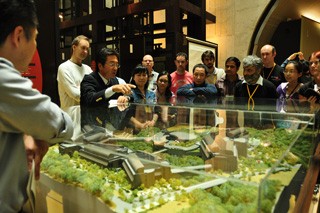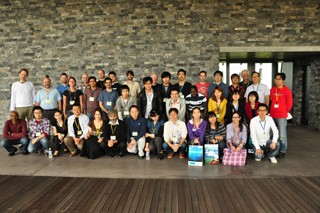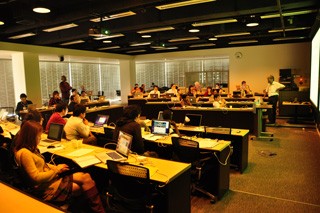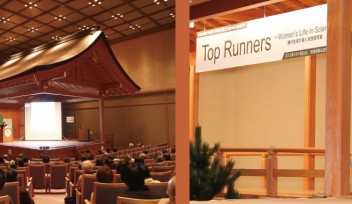Not So Abstract After All
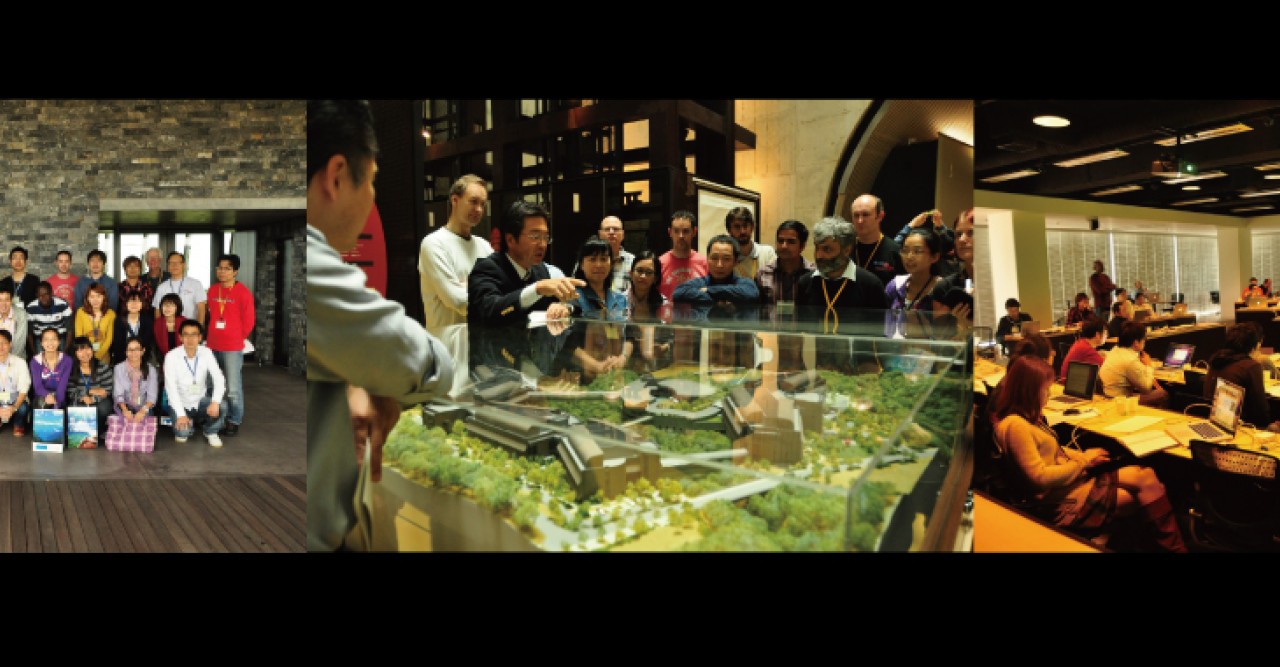
A typical trait of today’s computer world is the increasing frequency of software upgrades. Research is not immune to such software upgrading that has potential to improve how research is done.
Dr. Masahisa Yamada, Scientific Senior Manager, describes OIST to CCP4 participants during their tour of the campus
Group Photo
The CCP4 Crystallography School
From 5 to 9th December 2011, a five-day crystallography school was held at OIST following a collaborative partnership between OIST researchers and the Collaborative Computational Project No.4 (CCP4). CCP4 is a group of computational projects with a unique collection of software used by researchers in the field of protein crystallography. Academics need to stay up to date with the improved software applications.
The OIST school with about twenty graduate students and postdoctoral researchers from several countries in the South East-Asia and Oceania region aimed to educate users on using CCP4 software in protein structure development and to address specific problems that applicants face while processing data and solving and refining novel structures.
Participants brought along their own data, a requirement of the school, as this would enable them to apply the software to their own data and develop their own protein structures real time. Dr. Garib Murshudov, a visiting Lecturer from the Medical Research Council, Laboratory of Molecular Biology in Cambridge, UK, said, “I have been to CCP4 schools in Osaka and Tokyo, and this is my first time in Okinawa. As with past schools, the strong emphasis is for participants to get to work with data that they collected and are passionate about. We want to avoid using abstract data and information.”
OIST Associate Professor Fadel A. Samatey, head of the Trans-Membrane Trafficking Unit, said, “The twenty participants were encouraged to come with their own data. We had twenty new structures of proteins developed. The good thing about using personal data is that it makes it easier for the participants to go back to their lab knowing how to use the software on their own data and also teach other people in their labs.”
Dr. Eugene Krissinel of CCP4 concluded, “I am very impressed with the setup of OIST and pleasantly surprised about how this university is setup, the buildings and the people. All of this is located within this rapidly evolving region. It is barely more than 3 hours to places previously inaccessible to CCP4--for instance, Shanghai, which is right next door.”






